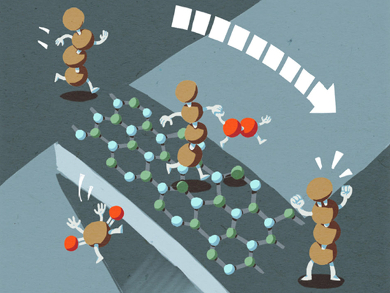The current price volatility of traditional oil feedstocks has led to an increased use of shale gas as feeds to steam crackers. This creates a gap between supply and demand of propene and butenes. To close this gap, routes to producing olefins from alkanes have been investigated, with the oxidative dehydrogenation of alkanes (ODH) being one possibility. When attempting partial oxidation, very often the products are more reactive than the reactants with over-oxidation occurring to form CO2.
Ive Hermans, University of Wisconsin-Madison, USA, and colleagues have used hexagonal boron nitrides (hBN), an analog to graphene, as a catalyst for ODH. In the selective oxidation of n-butane and isobutane, hBN proved to be active and highly selective towards C4 olefins. Furthermore, when compared to the state-of-art ODH catalysts, by-products are other light olefins and not COx compounds.
Kinetic and spectroscopic studies reveal that the reaction proceeds between chemisorbed oxygen and gas-phase alkanes. While this study focused on intrinsic activity rather than maximizing products yields, the results are promising for improving selectivity towards C4-olefins, with very little formation of COx products. The researchers note that “improvements of the hBN catalysts must focus on elimination of light olefin production pathways”.
- Selective Oxidation of n-Butane and Isobutane Catalyzed by Boron Nitride,
Juan M. Venegas, Joseph T. Grant, William P. McDermott, Samuel P. Burt, Jack Micka, Carlos A. Carrero, Ive Hermans,
ChemCatChem 2017, 9, 2118–2127.
DOI: 10.1002/cctc.201601686




